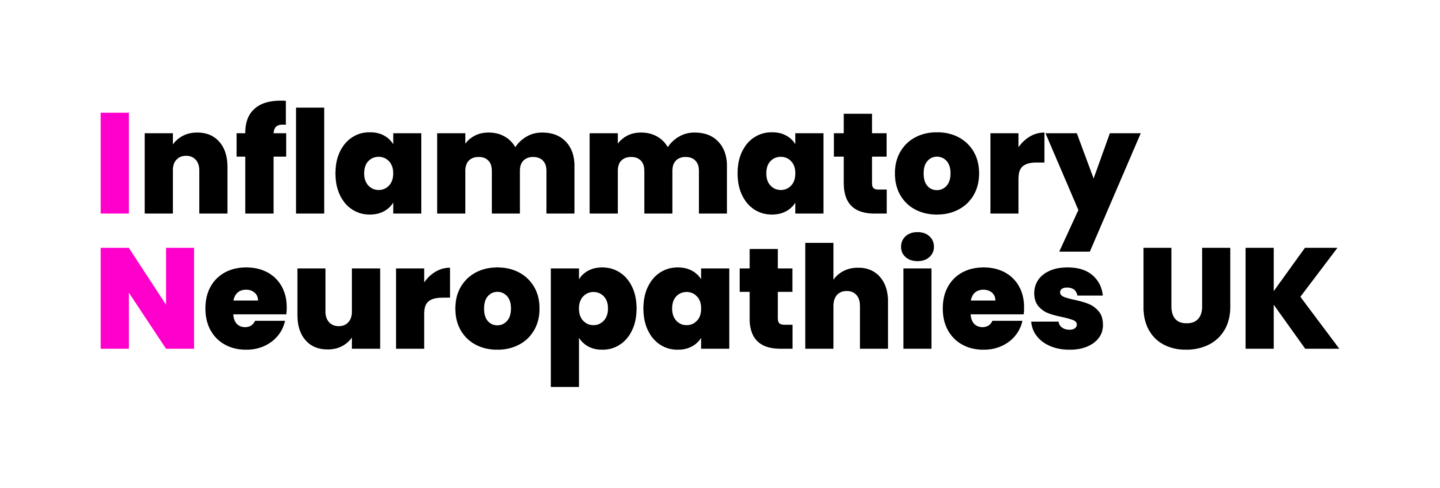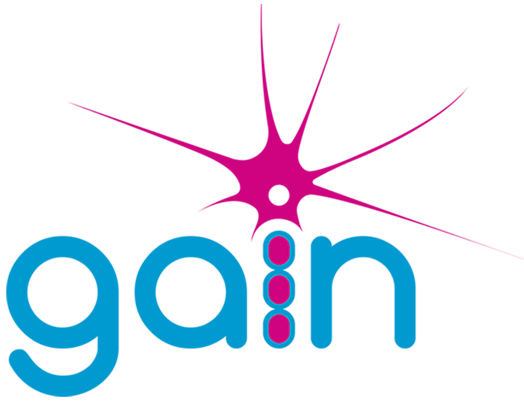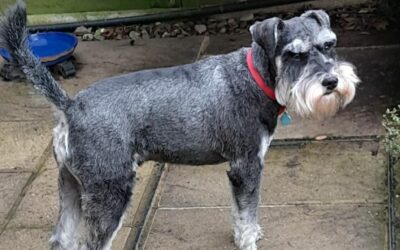As I wander around Katmandu and all it’s madness before I start a trek to the Mansulu Region of the Himalayas, it’s hard to recall the day back in 2010 when GBS took my life away for a year.
I was living and teaching in Bromsgrove International School in Bangkok with my wife Donna and three children Rosie, Joe and Laila. It was the last day of term before Christmas Break and I was feeling tired more so than usual. I had a light headed dizzy feeling that came and went. I decided to go home and sleep it off and avoid the end of term festivities for now. When I awoke I had double vision that wouldn’t go. A little concerned I made it to the local bar to join others to explain what was wrong. The consensus was to have a beer and let it sort itself out, not the best idea as I could already see two. A little while later still with the double vision I took a taxi to the local hospital where the ophthalmic doctor took one look and said, “eyes not working neurological problem you go another hospital”.
By then it was quite late and not wanting to brave the Bangkok traffic I decided to go home and sleep it off until morning in the hope it would resolve. When the morning came it was in fact a lot worse, I couldn’t walk easily and my speech was rapidly going. Donna took me in a taxi to a bigger hospital downtown where I was given a battery of MMR, CT scan and nerve conductivity tests. Within a few hours the consultant had narrowed it down to either Botulism or GBS. At this point I recall Donna saying that Botulism was OK, just food poisoning so I would be alright. I couldn’t speak at this point and was laughing inside knowing that Botulism was almost always fatal and neither of us had ever heard of GBS. Forward wind a few hours I had lost all speech, mobility, and was struggling to breathe. The hospital took the decision to ventilate and still without a firm diagnosis, I was transferred to a government hospital with a specialist neurological ward where further test including the lumber puncture test would confirm that I did have GBS. So good news that I didn’t have Botulism but little did we both know that this was going to be a long drawn out illness and a tough test for the whole family. The eventual diagnosis was AMSAN the acute form of GBS with rapid onset symptoms. Looking back initially it helped not really knowing would happen and the possible complications. And so began my six months in a Bangkok ICU ward at Prasat Neurological Hospital. Like most other people’s stories I have read since my illness, the first few days and weeks were a blur of confusion, panic, sedation and fear. My eyes closed completely which added to the confusion and made hallucinations even more vivid. I recall visitors early on from family and school. I remember the Filipino director of the school came to visit to say the last rites and pray for me (my youngest daughter whispered that she was crying and saying funny things.)
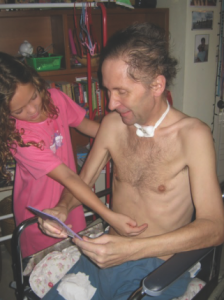
In fact the hallucinations are still part of the illness, which I recall clearly. I have no idea how long they lasted but they seemed to recur daily and I was able to pick up where I was the last time. One of the strangest was the obsession with breathing on my own and the doctors had told me that to get off the ventilator I needed to climb this imaginary ladder to the top of Mount Everest and then they would consider taking me off.
I tried and tried and when I did eventually get there they said I was still not ready. I also became convinced that I was in a new kind of progressive hospital which was outside and all the beds were on a kind of roller coaster, which you could never get off. Near this hospital was my house, which I could sometimes fly to with what I could only describe as a pogo stick with a helicopter blade on top. After I reached home I went inside although my whole family was there they couldn’t see me and when I shouted they just ignored me. My wife had remarried and had and had started a new life. One the same theme after I had the tracheostomy everyday when I woke up one of the doctors had attached pieces of tin or metal to my skin near the tube but under my skin. I had no idea how they got there but when they were removed they returned the next day. Perhaps the strangest hallucination must have occurred in the first few weeks. I became convinced that I was in another hospital and requested I be moved. A huge argument followed and the doctors said if I was they would have to keep the ventilator and it would be a risk to move me without another one to take its place. Eventually i was moved and two kind nurses kept me breathing somehow until I arrived at the new hospital. I was still fully ventilated in the first hospital but was also in a bed at another hospital. I knew this was impossible and couldn’t understand how no one else could see this. Needless to say I still have no idea what all this means or the time scale involved but when my eyes did eventually open after 4 months it was strange to see that I was in a small ward with only 8 beds.
As the weeks and months passed and life events came and went, time became almost meaningless and I fixated on getting off the ventilator. It took weeks to wean me off 5 minutes an hour for one week. The panic when the nurses turned it off was huge and by far the most difficult and tiring thing that occupied my days. I became quite down that I wouldn’t be able to ever do it and as for sleeping through the night without the ventilator, forget it.
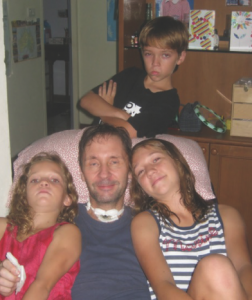
My daily physio was the highlight and brought welcome relief to my legs and feet, which were very painful. The only position that brought any relief in bed is best described as the frog legs position and most people who visited me were required to perform some kind of leg massage before they left. I did have a couple of scares in ICU picking up Pneumonia a few times and going into septic shock at one point. the Thai nurses afterwards would joke that they thought I died two times but luckily I didn’t and I began to make good progress with the ventilator managing 4 hours one day only to go backward the next day. Around May of 2011 the decision to take me to the physio room was made and after lying down for almost 6 months I was wheeled down in my bed to try and push my exercise forward. This was the first time I had been out of the hospital building and the bright sunlight was almost unbearable but wonderful at the same time. I was the only farang (foreigner) in this Thai hospital and became sort of a celebrity case.
I began to teach English to some of the nurses and learnt some Thai in return. At this point I began to realize how weak I had become in every sense. I had gone from a healthy slightly overweight 90kg to around 55kg losing 35kg. Over the course of about 10 days I was strapped onto a rack, which slowly elevated me by degrees until I could stay vertically without passing out. Looking around the physio room, which was quite basic I could see all sorts of people, young and old learning to walk again perform basic physical functions after accidents and strokes. I realized that it would take me a very long time to get some mobility and strength back. I wanted to get strong again but was dependent on everyone around me to do almost everything all the time. I was gradually spending time sitting for a short time in a chair and even started to swallow and eat some mushy Thai rice. This was a real turning point being able to eat small amounts and one kind Thai nurse brought me a banana in one day, which took me over an hour to eat, but was easily the best thing I have ever tasted after 6 months of intravenous feeding and a food tube into the stomach.
Quickly after I was sent to have my trachy tube reduced in size and was told I would be able to talk again after they checked there was no scar tissue in the bronchial tube. I kept this secret from my wife Donna until she came to visit then when she was looking for something I shouted out her name making her jump out of her skin and swearing profusely. Moments like this really helped me get through the days, which were dragging now, so I knew I was ready to go home to continue my recovery. On June the 16th still with my trachy in and in a wheelchair I returned home to begin the hardest phase of the recovery learning to walk and building myself up again to resume a normal life. Unlike hospitals in the west once you’re discharged in Thailand there is very little in the way of post illness care added to which the hospital was a long way to go and I needed to arrange physio nearer home. I received tremendous support from my family helping me into the wheelchair, up the stairs showering and dressing.
One minor setback in the first few weeks was picking up another infection which required another hospital stay and meant missing my kids’ prize giving at school. This was a very emotional time for me happy to be at home but the full realization that I was a long way from being able to cope on my own and shocked at the decline in general strength of my body. The good news was progress became much quicker at home. I progressed from wheelchair, to frame, to sticks within 2 short months and with sheer desire to regain some strength, I pushed myself with the help of a Korean physio Eunju. I became stronger repeating daily the most simple of exercises to get full mobility back. The school allowed me to return to work gradually and despite sounding like Rod Stewart I was able to resume some teaching after Christmas, one year on from the illness.
In June of 2011 I took part in a 5km charity run and although it was painful the feeling of finishing was quite overwhelming and a special moment indeed. Regaining fitness all the time the whole family made the move in August 2012 to Saudi taking up new appointments and the challenges of life in the Middle East. And so to the Himalayas.
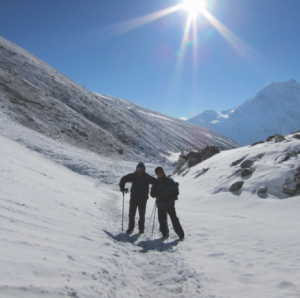
It had been 3 years since the illness and I had always wanted to pay a visit to Nepal and managed to tag along on a trip that 2 colleagues were planning called the Manasulu trail. A lesser trodden area of the Himalayas with a distance of around 180km to complete in 8 days going up to a height of just under 5200m. I really had no idea if my feet could cope with this type of challenge although I had been quite high before prior to GBS. The trail itself is outstanding, huge rivers crossed by Himalayan bridges, deep ravines and the biggest hazard being the pack donkeys transporting goods up and down the mountains.
The day trek over the mountain pass was very demanding but the conditions were spectacular. Setting off at 6 in the morning in deep snow and watching the sun rise was amazing. It took about 4 hours to reach the top witnessing 2 avalanches on the way and the weather was perfect. Bright sunshine and crystal clear skies. For me the descent was the worst part across an ice field with a very steep drop, and feet that were tired and had become less responsive as the day progressed.

It was a very slow descent but we made it down to the lower teahouse at about 4 pm, thirsty and hungry but with a huge sense of achievement and satisfaction. All in all Nepal was amazing, inspiring people and spectacular places to see. I had my doubts about completing the trek in the first place but at least I now know that I can push myself a little more to achieve my desired goals and for the moment, 3 years on from GBS I can put up with the feet pain because I have made a good recovery and feel very lucky to be able to take part in such a rewarding and exciting venture, something that seemed inconceivable as I was lying in the ICU ward in Bangkok 3 years ago. Special thanks to my two colleagues Jerry and Nick for taking me along, a huge thank you to all the ICU nurses in Prasat Hospital Bangkok and a special thanks to my wife Donna and my three children Rosie, Joe and Laila who got me well again and were always there to help both in and out of hospital.
Andy Hepworth
